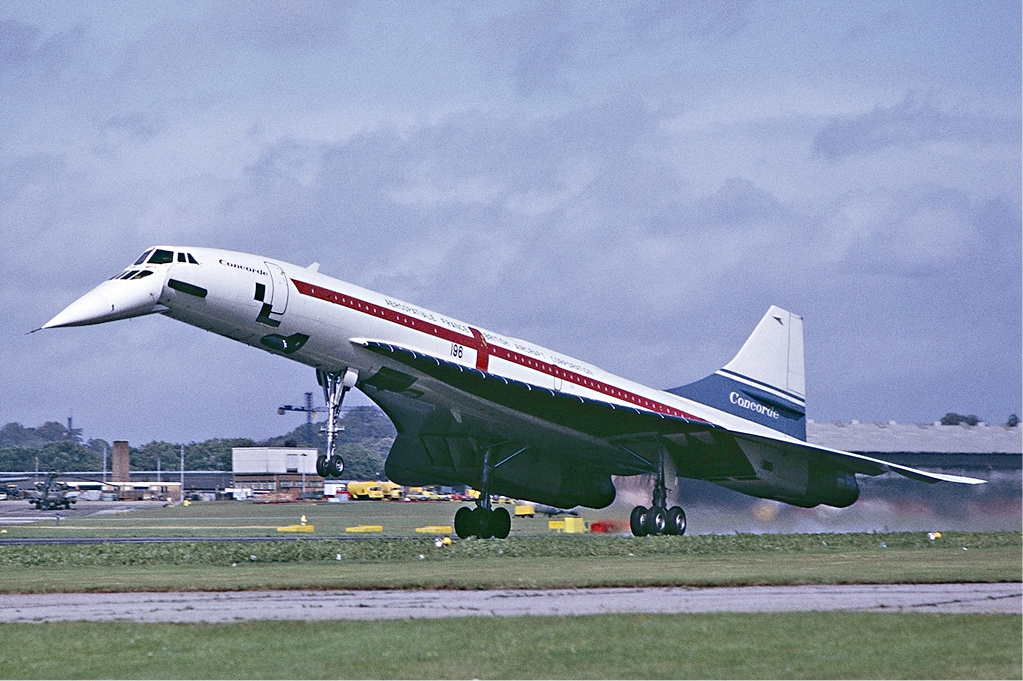Looking at an image of the orbiter on the ground, it's obvious the nose landing gear is positioned higher than the other landing gear in the wings, making the nose of the orbiter droop down. As far as I know, the orbiter was the only aerial vehicle that has its nose down; most other airplanes have their landing gear level, or if not, they have tail wheel landing gear with the nose up. What's the reason for this?
-
12$\begingroup$ Not an answer, but I think it's notable that most aircraft need level or upward-pointed wings on the ground to take off from a runway. But the shuttle never left the ground that way. It only needed to worry about landing. $\endgroup$– Seth RCommented Jun 24, 2021 at 14:02
-
4$\begingroup$ It's not the only aerial vehicle to be nose-down on the ground. Some smaller regional jets (for example, the CRJ-900) also sit in a slightly nose-low attitude. $\endgroup$– SkylerCommented Jun 24, 2021 at 14:03
-
2$\begingroup$ So it will land of the main gear, and only drop the nose much later, with less violence? Kinda like all airliners do? It's just more pronounced in the SHuttle, because the shuttle will never be trying to aerodynamically take off, thus can afford a strong negative angle on the wings once all wheels are on the ground. And of course smaller wheel = less mass. $\endgroup$– CuteKItty_pleaseStopBArkingCommented Jun 25, 2021 at 10:38
-
$\begingroup$ I also wonder how important the drogue chute (which deploys while the front gear is still in the air) was in this regard. As it was attached above the engines, it must have caused a quite substantial upward pitch, which would brake the front smackdown. $\endgroup$– leftaroundaboutCommented Jun 26, 2021 at 14:07
1 Answer
There are really two questions here: why is the main gear long, and why is the nose gear short?
The main gear for most aircraft are designed to carry most of the aircraft's weight and therefore they're positioned near (slightly aft of) the center of gravity. The space shuttle lands at a high angle of attack (a very nose-up attitude) because of its delta wings. In order to provide adequate clearance to avoid a tail strike, the main gear needs to be long.

Shuttle Crew Operations Manual - Section 4.9-1
Concorde also had delta wings and landed at a high angle of attack. It similarly had very long main gear.
In order to keep the aisle level for passengers boarding and exiting, Concorde also needed a long nose gear.
So why didn't the shuttle have a long nose gear strut? To save weight. Every pound/kg of mass you add to the nose gear strut results in that much less payload you can take to space. The shuttle didn't have passengers walking up and down the aisle, so there wasn't much of a requirement to keep it level.
An interesting consequence of the negative (nose-down) angle of attack after touchdown was that it applied extra load on the main gear. At that angle, the wing wants to "lift" the shuttle downward into the runway. So, after the nose gear touched down, the elevons were positioned 10° down, which changed the angle of attack of the wing and helped reduce the weight being applied to the main gear. This was called "elevon load relief". See Shuttle Crew Operations Manual - Section 7.4-19
-
6$\begingroup$ An interesting aside, "nose gear slapdown" was often the driving load case for a shuttle mission. $\endgroup$– ErikCommented Jun 23, 2021 at 21:02
-
35$\begingroup$ I would add that other delta-wing aircraft need to keep the nose up to maintain the angle of attack needed for taking off from a runway. The shuttle, of course, had no such requirement. $\endgroup$– NimlothCommented Jun 23, 2021 at 22:09
-
3$\begingroup$ Beep trim derotation! Great answer. $\endgroup$ Commented Jun 23, 2021 at 23:04
-
8$\begingroup$ @Nimloth Well, technically, the space shuttle has the absolute highest AoA requirement (straight up) during takeoff, but that has nothing to do with its landing gears. $\endgroup$– NelsonCommented Jun 24, 2021 at 4:48
-
27$\begingroup$ @Nelson if you really want to be technical, straight-up attitude doesn't mean a high AoA. If you assume zero wind, then your AoA is simply the angle between where your nose is pointed and the direction of travel. If you're pointed straight up and you're traveling straight up, then your AoA is zero. $\endgroup$ Commented Jun 24, 2021 at 6:33

